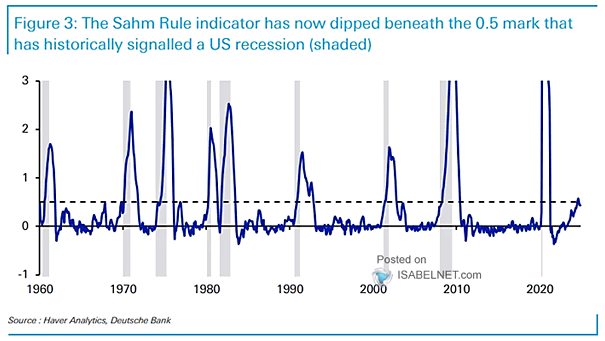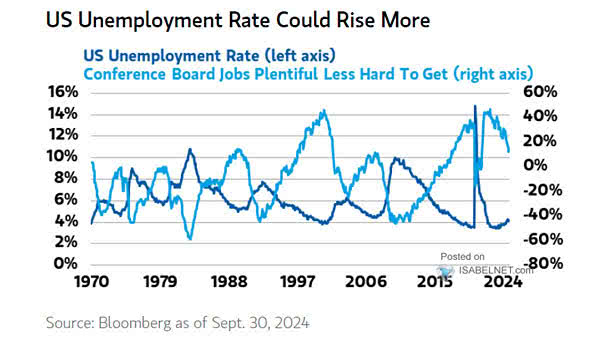Sahm Rule Recession Indicator – U.S. Unemployment Rate
Sahm Rule Recession Indicator – U.S. Unemployment Rate The recent dip in the Sahm Rule indicator below the 0.5 mark is encouraging, as it indicates that a U.S. recession is no longer likely. Image: Deutsche Bank


